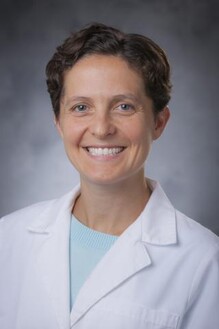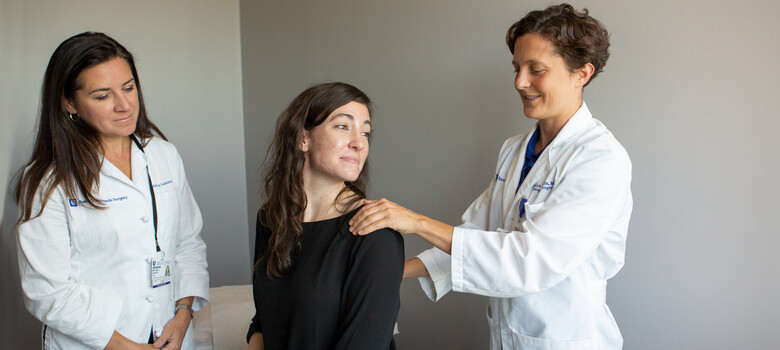An Alternative Surgical Option for Severe Rotator Cuff Tears

If you have a severe rotator cuff tear that can’t be mended, or if a previous repair didn’t bring relief, superior capsule reconstruction may help.
About Rotator Cuff Tears and Repairs
Your shoulder is a ball-and-socket joint. The rotator cuff is a group of tendons and muscles that helps keep the ball at the top of your upper arm bone centered in your shoulder socket. It also helps you lift and rotate your arm.
When your rotator cuff tears -- either from a sudden injury or long-term wear and tear -- the pain and weakness can make it difficult to do simple tasks that involve reaching overhead, like washing your hair or putting away dishes. If nonsurgical treatments like medication and physical therapy don’t help, doctors can repair moderate tears surgically. Until recently, though, there were few options for repairing more severe rotator cuff tears. One option, called reverse shoulder replacement surgery, still requires you to limit your activities after surgery and may not last more than 15 years. As a result, orthopaedic surgeons typically reserve this option for patients older than 70 who are relatively inactive.
Superior Capsule Reconstruction -- An Alternative
In recent years, Duke shoulder specialists have begun offering a newer technique, called superior capsule reconstruction, to repair severe rotator cuff tears. In this approach, the surgeon inserts a human tissue graft, attaching one end to your upper arm bone and the other end to your shoulder socket. The graft doesn’t replace your rotator cuff tendon, but it performs a similar function: keeping the ball of your arm bone centered in your shoulder socket and helping you raise your arm.
Doctors perform the surgery arthroscopically, by inserting a telescope-like camera and surgical instruments through small incisions about the width of a finger. It’s done under regional anesthesia combined with sedation, and most patients go home the same day.
Jocelyn Wittstein, MD, one of a few Duke orthopaedic surgeons who performs the technically demanding technique, said most patients do well with it. “They have an immediate reduction in pain,” she said, “and they’re very happy with their increase in range of motion. Relief of night pain is the most predictable benefit of this surgery.”
Tally Lassiter, MD, MHA, another Duke orthopedic surgeon who performs the procedure, added, “We have been doing superior capsule reconstructions in this country for over four years now, and the short-term results are good-to-excellent in about 75% of patients, particularly in relation to pain relief.”
Recovering from Superior Capsule Reconstruction
Dr. Wittstein notes that people who have superior capsule reconstruction generally have less pain right after surgery than if they’d had a typical rotator cuff repair. However, the timeline for physical therapy and returning to normal activities is longer and more gradual. That’s because the graft needs time to incorporate with the rest of the shoulder joint. “We protect it from really heavy lifting until about six months after surgery, to let the graft heal in,” said Dr. Wittstein.
Over time, most patients are able to raise their arm again. Dr. Wittstein cautions that not everyone will regain full range of motion, but the improvement is usually significant.
Who Is a Candidate for Superior Capsule Reconstruction?
This option can restore motion and relieve pain for those who may have been told that their rotator cuff tear is so severe that it can’t be repaired. You may also be a candidate if you had rotator cuff repair surgery and it didn’t heal properly. However, Dr. Wittstein noted that superior capsule reconstruction won't help if you also have significant arthritis in your shoulder. Instead, reverse shoulder replacement may be recommended. That’s just what it sounds like: a form of shoulder replacement where the joint is reversed. A ball is attached where your shoulder socket normally sits, and a socket is fitted to the top of your upper-arm bone. This allows you to use different muscles, instead of the ones in the rotator cuff, to move and rotate your arm.
“Reverse shoulder replacements are a good option for patients over 70 years of age with large tears and significant arthritis who do not have daily activities that require lifting of greater than 25 pounds overhead,” said Dr. Lassiter. “For younger or more active patients without arthritis, superior capsule reconstruction is a good option.”
In many cases, Dr. Wittstein said, she’ll begin surgery by attempting to repair the torn rotator cuff tendon, with superior capsule reconstruction as an agreed-upon backup option for the patient. “If the tendon is surprisingly flexible and more mobile than pre‐op imaging suggested, we can still do a primary repair,” she said. “So, we have a plan for what we expect, but in borderline cases we can make the decision after surgery begins.”
Technique Offers Long-Term Benefits
In addition to easing pain and improving mobility, superior capsule reconstruction can also prevent shoulder problems from getting worse. When a rotator cuff tear goes unrepaired, the ball part of the joint tends to drift higher in socket, causing arthritis over time. Superior capsule reconstruction restores the alignment of the shoulder joint and normalizes its mechanics, which may slow progression of the condition.





